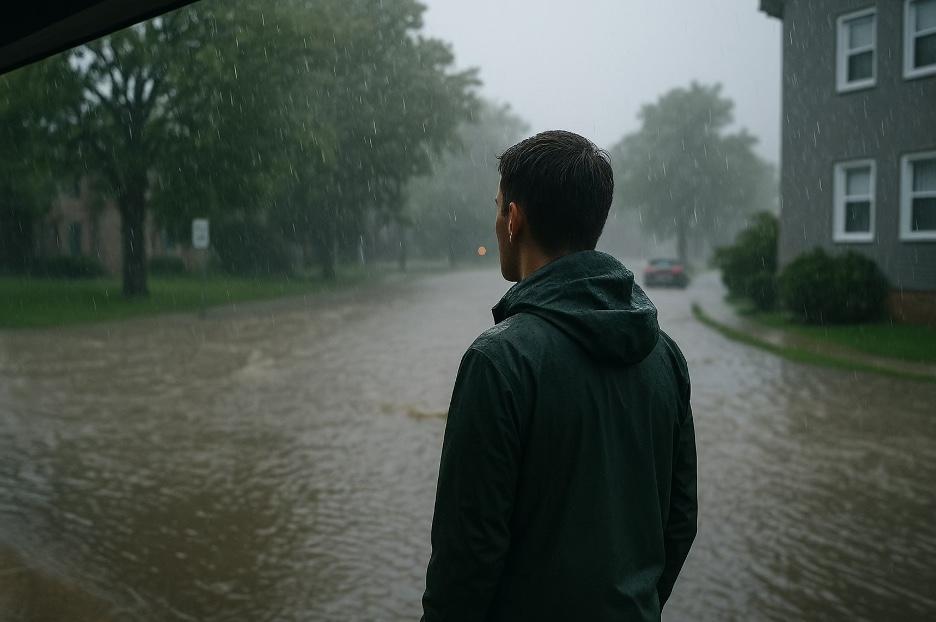

|
Understanding Flash Flood Warnings: What They Mean and How to Stay Safe |
||
 |
A flash flood warning signals that rapid flooding is either happening or expected soon. It means you should act immediately to protect yourself and your property. Learn how these warnings work, what causes flash floods, and how to prepare and respond to ensure your safety.
What Is a Flash Flood Warning?When heavy rain, dam failure, or rapid snowmelt overwhelms drainage systems or natural waterways, the result can be a flash flood. A flash flood warning is issued by the National Weather Service (NWS) when this kind of dangerous flooding is imminent or already occurring. These events develop quickly, often within six hours of the triggering weather. Causes of Flash FloodsFlash floods can result from several natural and man-made events. Intense rainfall is the most common cause, especially when the ground is already saturated from earlier storms. Urban areas are particularly vulnerable because pavement and buildings limit the land’s ability to absorb water.
Each of these scenarios creates ideal conditions for a fast-moving, potentially deadly wall of water. How Are Flash Flood Warnings Issued?Meteorologists use radar data, satellite images, and rain gauges to track storm development and rainfall accumulation. They combine this data with local geography to assess the risk of flash flooding. If flooding is imminent or occurring, the National Weather Service (NWS) sends out a flash flood warning through multiple channels, including:
These alerts are meant to grab attention quickly. Most include phrases like “Turn Around, Don’t Drown” to emphasize the life-threatening nature of flash flooding. How to Stay Safe During a Flash Flood WarningWhen a flash flood warning is issued for your area, act fast. These floods can happen in minutes, especially near streams or in low-lying regions. Follow these safety tips:
If you are told to evacuate, do so without delay. Roads may become impassable quickly, trapping drivers in vehicles or homes. Preparing Before a Flash Flood WarningPreparation is key to surviving a flash flood. Whether you live in a flood-prone area or not, you should take these basic precautions:
If you live near a dam, levee, or steep terrain, understand the specific risks for your location and plan accordingly. Understanding Flash Flood TerminologyWeather alerts use specific language to describe the threat level. Here’s what you should know:
These terms help prioritize your response and guide how urgently you need to act. Flash Floods and Urban AreasCities are especially vulnerable to flash floods because of how water flows on paved surfaces. Storm drains may not handle sudden surges in rainfall, and low-lying areas like underpasses, parking lots, and basements flood quickly. Flash flooding in cities can be harder to predict because of the many variables in stormwater infrastructure. The Aftermath of a Flash FloodOnce the water recedes, the danger isn’t necessarily over. Flooded buildings can have hidden structural damage, and roads may be washed out or weakened beneath the surface. Stay out of buildings that have been submerged until they are inspected. Insurance and Flash Flood ProtectionMany people assume homeowners or renters insurance covers all types of water damage, but that’s not the case with floods. To be protected financially from flash flooding, you need a separate flood insurance policy through the National Flood Insurance Program (NFIP) or a private provider. Flash Flood Safety for BusinessesBusinesses must also take flash flood warnings seriously. Flooding can ruin inventory, damage structures, and halt operations for weeks. Business owners should:
These steps help protect your investment and employees during extreme weather. Real-Life Flash Flood StoriesIn July 2022, flash flooding in eastern Kentucky caused catastrophic damage. Over a dozen people were killed, hundreds of homes were destroyed, and rescue efforts took days due to impassable roads. Events like this remind us how quickly flash floods escalate and the importance of early warnings and fast responses. Climate Change and Future Flash FloodingClimate change is contributing to more frequent and severe flash floods. Warmer air holds more moisture, leading to heavier rainfall in shorter periods. Cities and regions that have never experienced flash flooding before may begin to see new risks. Final Thoughts on Flash Flood WarningsFlash floods are one of the most dangerous types of weather events due to their speed and unpredictability. A flash flood warning is not something to take lightly. If you receive one, take immediate action. Know your risks, prepare your home or business, and always have a plan in place. |